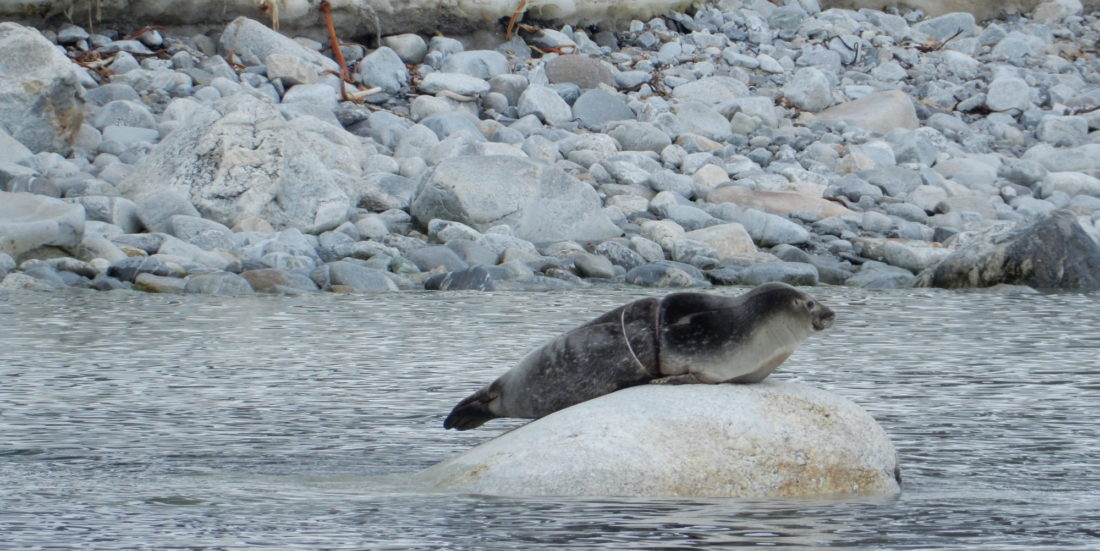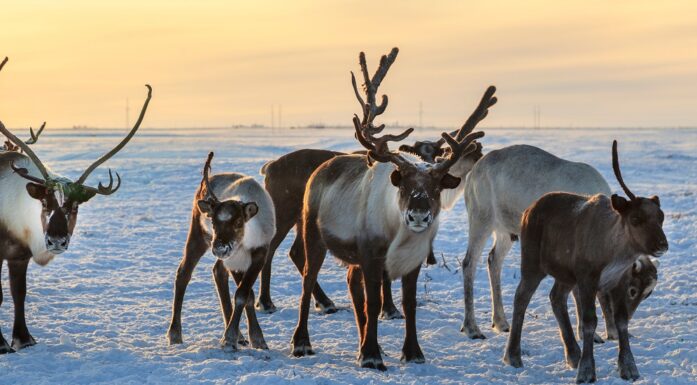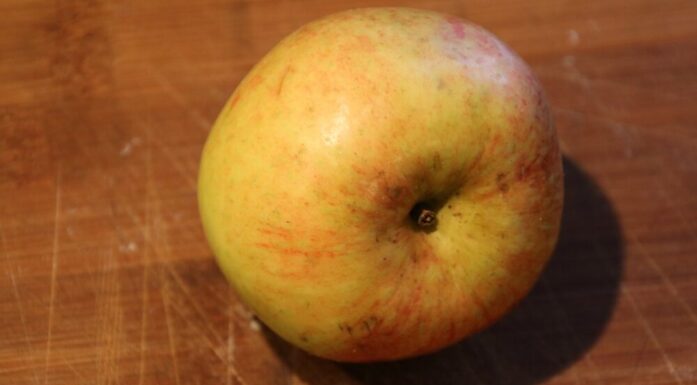Awash in trash at the top of the world
Every year, an estimated 8 million metric tons of plastic waste blows, falls or flows into the world’s oceans. Earlier this autumn, participants in the annual Svalbard Course plucked up 512 kg of the stuff from just one beach in two hours.
PLASTIC POLLUTION: At 78 degrees north latitude, the island archipelago of Svalbard and its little town of Longyearbyen seem far removed from the populated world and all of its litter. But whether swept up by ocean currents or lost from fishing fleets that roam the seven seas, plastic trash can and does find its way to Svalbard beaches.
This year’s annual Svalbard Course, held in early autumn, organizers decided the time had come to focus on plastic pollution as a problem. The course, which was offered for the first time in 1976, allows its sponsors, NTNU, the Norwegian Polar Institute and the University Centre on Svalbard (UNIS), a chance to introduce policymakers to the myriad problems besetting the Arctic.
This year, 15 of the 20 participants came from 10 of Norway’s government agencies, all of which make decisions that can and do affect Norway’s arctic areas.
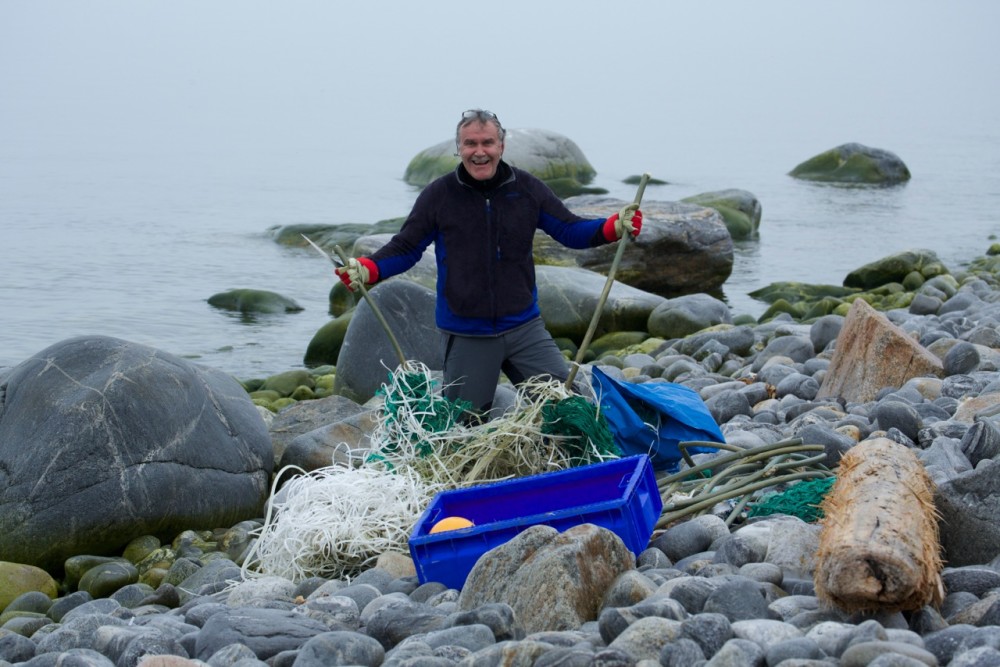
About 80 per cent of the marine trash found on Svalbard beaches comes from the fishing industry. Photo: Geir Johnsen, NTNU
“The goal of the Svalbard Course is to give people who work with Svalbard issues in the Norwegian government deeper insights into Svalbard,” said Geir Johnsen, a professor of biology at NTNU who is one of the course’s organizers. “This year’s theme was ‘Dirty waters’ where we focused on marine plastic and microplastics and the consequences for the ecosystem.”
Johnsen said participants got “hands on” experience with plastic debris on the last full day of the course when they travelled to the shoreline of Amsterdam Island, NW Spitsbergen, to clean the beach.
- You might also like: Extreme weather in the Arctic causes problems for people, wildlife
A Norwegian territory and a ‘missionary’ project
Svalbard is an unusual place in very many ways, not the least of which is its association with Norway. The archipelago is a Norwegian territory, but it includes Russian inholdings, such as the towns of Pyramiden and Barentsburg. Ny-Ålesund, the most northerly settlement in the world, is home to a dozen permanent research stations from 10 nations around the world, some of which would seem less likely to have arctic interests, such as India and China.
Longyearbyen, the largest town on the main island of Spitsbergen, with about 2000 residents, is a natural jumping-off spot for research cruises exploring the mysteries of the Arctic.
The reason for the archipelago’s unusual political classification is due to the Svalbard Treaty of 192o, which allows all treaty nations the same right of access to and residence in Svalbard without the need for a visa. Nearly 500 people from 40 countries, mainly Thailand, Sweden and Russia, consequently call Svalbard home.
Keep Svalbard Clean
An official assessment from the Svalbard governor’s office says that most of the marine litter found in the Svalbard archipelago is plastic from the fishing fleet.
“There are bits of nets and trawl bags, plastic and metal net floats, fish boxes and plastic containers,” the assessment says. There is also some household waste, the assessment says, including the omnipresent glass and plastic bottles, plastic bags and shoes.
The governor’s assessment says that given the number of beaches it cleans and monitors that it is possible to see any positive or negative trends. But the assessment quotes a depressing statement from OSPAR, the Oslo–Paris Convention for the Protection of the Marine Environment of the North-East Atlantic, which says: “The overall amount of marine litter is consistently high and is not reducing despite recent efforts.”
Norway will implement a “Fishing for Litter” programme that is part of a OSPAR Marine Litter Action Plan starting in January 2016. The programme, which has already been established in a number of OSPAR countries, including the Netherlands and the UK, provides big plastic bags to fishing boats so that they can collect the trash that they pull out of the ocean in nets and trawl bags rather than throw the trash back into the sea.
The Norwegian government’s pilot programme will provide funding for handling the waste once it is brought to shore. Fishing boats participate voluntarily to collect the trash for the programme.
But the melting of summer arctic ice and the fact that at least 20 percent of the world’s undiscovered oil and gas deposits are thought to remain in the Arctic has given Svalbard geopolitical importance that far outstrips its population numbers and size.
Thor Bjørn Arlov, another course organizer and a senior adviser for NTNU’s Pro-Rector for Research, said the goal of the Svalbard Course is to give people hands-on experience of the complexities of the area.
“One of the missions is to motivate people, to make them conscious of the environmental challenges – and make them fall in love with Svalbard,” he said. “It is in every sense a kind of missionary project that we’ve been up to for nearly 40 years.”
- You might also like: The dirtiest, clean place on Earth
Cleaned 650 metres of beach
The governor of Svalbard has held an annual cleanup of selected Svalbard beaches since 2001 in an effort to try to get the problem under control and to see what kind of garbage is washing up on beaches. So when course organizers wanted to choose a beach, they had only to contact the governor to see what needed cleaning up.
The choice, Amsterdam Island, is on the far northwestern part of the main island of Spitsbergen, where the West Spitsbergen Current transports a huge amount of plankton and debris such as plastic. Johnsen said the 650-metre-long beach had last been cleaned two to three years ago.
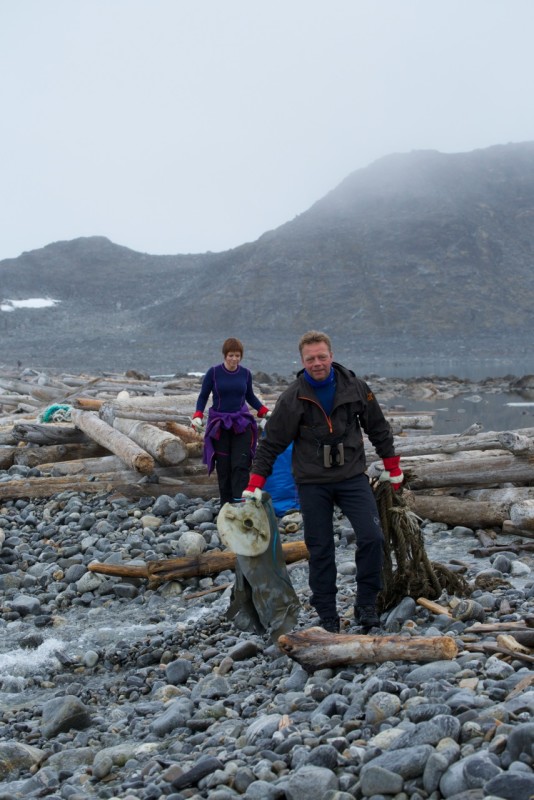
Participants picked up 512 kg of trash off a 650 metre long beach in just two hours. Photo: Geir Johnsen, NTNU
“By choosing this site we could demonstrate that debris such as plastic can be transported over large distances and may concentrate in pristine regions in the Arctic,” Johnsen said.
The twenty course participants spent about two hours picking up garbage from the beach while course organizers stood watch for polar bears – a requirement for anyone travelling outside the confines of Longyearbyen.
All told, participants collected 512 kg of trash in big bags. Eighty per cent was plastic waste from the fishing industry, including nets, floats and fish boxes. Roughly 200 kg of trawl nets were also collected but were too big to put in bags to be weighed, Arlov said. The nets were instead towed out to the ship by boat and loaded aboard for disposal.
A beach full of plastic
Lene Gjelsvik, a senior adviser at the Norwegian Coastal Administration who works on management plans for Norway’s marine areas, was one of the course participants. She described the surprising contrast between the wild, remote location and the up-close reality of plastic trash on the beach.
“It was a magical and untouched world, where the mist came and went along the barren coast – the last stop before the North Pole. A person couldn’t come closer to the world’s end, I think,” Gjelsvik wrote in an email response. “We landed on the north side, and there went all the illusions about ‘untouched’. The Western world had left clear traces. The beach was full of plastic, in all colors, shapes and sizes.”
Gjelsvik said she had previously participated in beach cleanups so she knew there would be trash, but was unprepared for how “emotionally overwhelming” it was.
“I had the feeling of doing a good deed and helping in a constructive effort to clean up, but that was mixed with sadness and frustration,” she wrote. “Finding this reality in the stark Arctic landscape really made a strong impression.”
- You might also like: Secrets of the High North
Turning experience into management decisions
Arlov and Johnsen said that it is important for participants like Gjelsvik to have first-hand experience of how the problems of civilization, like plastic pollution, can reach far into the Arctic.
“When they read about the problem and have to make policies or administrative measures, they will have had this experience,” Arlov said. “I think that is good idea, and is one of the goals of the Svalbard Course.”
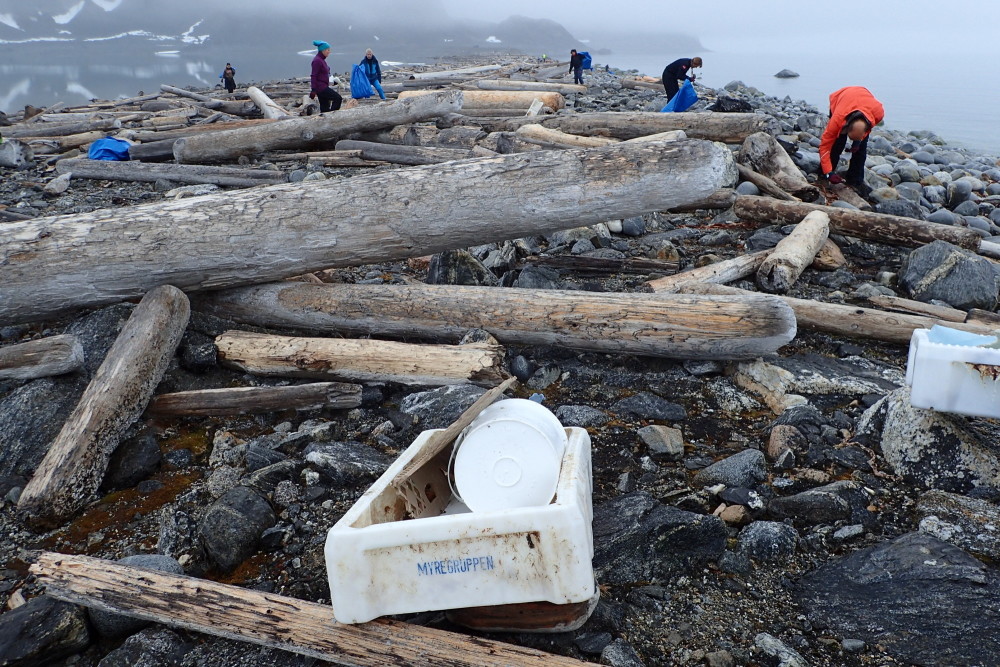
Participant Lene Gjelsvik said finding so much trash in such a remote place was “emotionally overwhelming.” Photo: Lene Gjelsvik
For her part, Gjelsvik says the course had a clear effect on how she does her job – in fact, she said she will soon change jobs for a period to work with issues related to the environment and preparedness for acute pollution problems in the Lofoten/Vesterålen region in northern Norway.
“The Svalbard Course was a clear reminder of how much responsibility we have as managers in making sure the right issues are addressed, and are seen in a holistic and interdisciplinary way,” she said.
Johnsen said participants this year came from the Ministry of Foreign Affairs, the Norwegian Environment Agency, the Ministry of Education and Research, the Ministry of Transport and Communications, the Research Council of Norway, the Norwegian Petroleum Directorate, the Norwegian Coastal Administration and the Directorate of Fisheries. Representatives from local organizations and businesses, such as the Store Norsk Mining Company, the Governor of Svalbard’s office and the Longyearbyen Municipal Council also participated.
